There are three images that I believe help shed some light on our current state.
Image 1: Iceberg turning upside down
The first one is a one-minute clip of an iceberg turning upside down. Watching the changes in the social-political field we all have experienced over the past six-plus months seems like watching an iceberg turn upside down and bottom up. Trump, Brexit, and the rise of the far right in many parts of the world are symptoms of a larger shift. That shift involves bringing to light layers of our collective psyche that our cultural norms had helped to keep bottled up. This darker side of our being—racism, sexism, misogyny, xenophobic and Islamophobic behavior—is no longer kept contained.

Image 1: The Iceberg Turning Upside Down
As these traditional norms are melting away, it seems that anything goes—as Donald Trump keeps reminding us with, among other things, his erratic tweeting behavior. But Trump is not the problem. He is the symptom. Which brings us to image two.
Image 2: Armed to the teeth—yet helpless
Since 2001, Americans have lived in a felt security crisis. The 9/11 attacks activated a deep-seated gene in the collective American psyche: it tells us that the danger is coming from outside. Picture the collective American psyche as four concentric circles. In the center circle is God’s exceptional country, the United States. In the next ring are America’s allies. In the third ring are the neutral countries. And in the fourth, the outer ring, are the rogue countries, the axis of evil, a group of nations or actors that are viewed as the primary security threat. (Current prominent members of this category include ISIS, Al Qaeda, North Korea, Iran, and, since Trump took office, potentially China.)
How do we respond to these threats? By upping our defense budget. That is our standard operating routine. The US defense budget is already the biggest in the world—bigger than the defense expenditures of the next twelve countries combined. Yet Trump decided we still need an additional $54 billion while slashing all other budgets, particularly the ones that deal with compassionate action (foreign aid, environmental protection, health coverage, education, and social services). If the Trump budget is approved, we will get more missiles, fighter jets, helicopters, and aircraft carriers. Already we have the most powerful military machine that has ever existed. We can defend our borders and take out enemies in every corner of the planet almost instantly. But does that ability make us more safe?
In the world of 2017, where does our number one security threat actually come from? It comes from within. The biggest threat to our security is not any of the actors listed above. It is the erratic behavior of the people in the White House who now have their hands on our nuclear codes—Steve Bannon and Donald Trump.
Today’s number one security threat to America comes from a place that no military machine, no matter how powerful, can ever protect us from: the Oval Office, where the commander-in-chief is supposed to steer with a calm and steady hand. To deal with this type of challenge from within, we do not need more tanks or missiles. Instead we need to learn how to bend the beam of attention back onto ourselves.
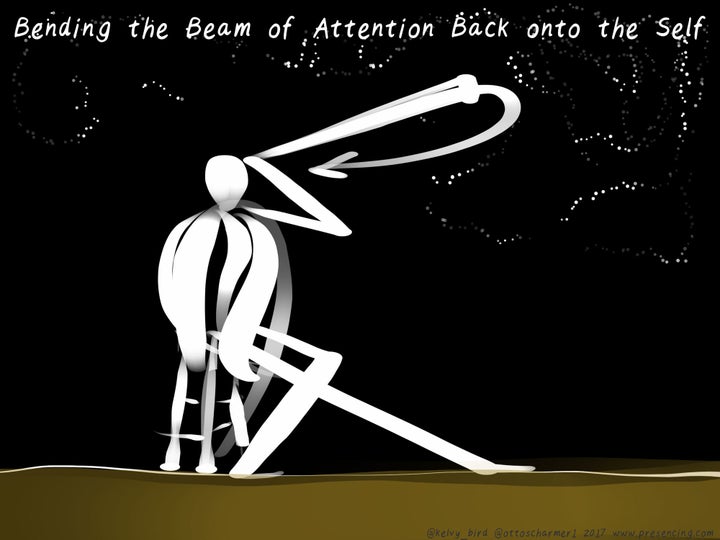
Image 2: Bending the Beam of Attention Back onto Ourselves
That self-reflective turn leads to a shift in awareness that is called for in all levels of our systems. How can we build the collective capacity for doing this?
This is where the third image comes into play.
Image 3: Mephisto—the Force of Evil
In Goethe’s Faust, Mephistopheles, the representative of evil, introduces himself by saying, “I am part of that power which constantly wants to do evil and constantly generates good.”
So, if we apply that view to our current situation, what are the “gifts” that we have received from the Trump administration to date?
Here is a list of seven major gifts that come to mind:
(1) Letting go of our hope that the solutions to our major challenges will come from the White House. The reality is that they will not. Thus we have no more excuses to wait for the solution to descend upon us from above. We have to find it ourselves. It’s that simple.
(2) The birth of a new political activism, particularly among young people across the world. We saw the astonishing turnout for the women’s march, worldwide, on January 21st. I first saw this last year in a u.lab session at the Impact Hub in Brixton, London. We now see it all over Europe, where young people are beginning to move in and reshape the political space. In Russia, tens of thousands of young people took to the streets to protest corruption.
(3) The rebirth of independent media and investigative journalism. Since the election, the mainstream media and investigative journalism, having suffered a decades-long downward slide, had their best quarter in a very long time. Journalism matters. Whenever Trump lashes out against the New York Times or the Washington Post, their digital subscriptions jump to another record high. Both of them are hiring investigative journalists. Democracy without independent media is like a human being without oxygen. It dies. Having seen the devastating impact of fake news, dark posts, and virtual echo chambers, we have all learned this lesson: if you want to retain independent media like NPR, or The Intercept, you need to open your wallet and help support them now.
(4) The rise of cross-sector collaboration linking key partners from all three sectors: business, government, and civil society. An example of such cross-sector collaboration are the 17 Sustainable Development Goals (SDGs) ratified at the 2015 United Nations summit. These goals can be summarized in terms of three groups that deal with the social divide, the ecological divide, and the spiritual divide (see figure 1).
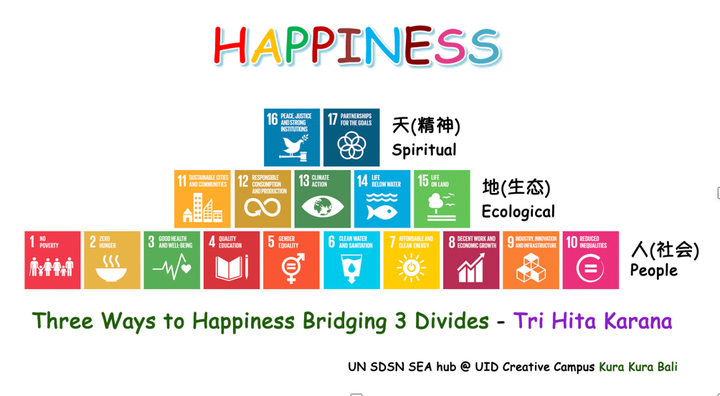
Figure 1: Ways to Happiness: Bridging the 3 Divides (Source: UN Happiness)
None of these goals are reachable by any organization or any sector acting alone. Achieving the intended impact will require new collaborative structures across all sectoral boundaries. The emergence of such cross-sector initiatives is one of the most remarkable sources of hope in our time.
Paul Polman, CEO of Unilever and one of the most visible global leaders of that movement, shares his view on bridging the divides in this 3-minute clip.
(5) Business for good. Paul Polman provides an excellent example of redefining the role of business in society. Another CEO who keeps redefining the purpose of business by relinking it with well-being for all is Eileen Fisher, the founder of the iconic women’s clothing company Eileen Fisher, Inc. Eileen sees business as a movement. For her it’s not enough to have taken the company on the path toward operating 100% sustainably; she now has her eye on helping the entire industry move toward sustainability, which effectively means to collaborating and sharing knowledge with her competitors in order to make the world a better place. A third example of the power of business as a transformative force is the amazing energy revolution we are in the midst of. In spite of the Trump administration’s effort to reverse the course of history by undoing environmental regulation, the price of renewable energy is falling rapidly and transforming the energy markets as we speak. Solar power is now the cheapest form of energy in 58 countries, including in China, India, and Brazil. Solar power is predicted to be the lowest-cost energy option in almost all parts of the world in less than a decade. Stanford’s Tony Seba predicts that the centralized system of fossil-fuel-based energy generation will be all but over by 2030, in 13 years from now. This is about the same amount of time the transition from using horses to the widespread use of cars took in the early twentieth century.
(6) The rise of city ecologies. Local and state governments are responding to the lack of compassion-driven policies at the national level through various bottom-up initiatives. These include the Trump administration’s immigration ban (which has been upheld by state courts), the deportation plan (which has been slowed down by the sanctuary city movement), and the abolition of environmental standards (which have been upheld by the state governments in California and Massachusetts, among others). The future shows up first locally. We see that particularly in the manifold movements around city ecologies, which are turning our cities into vibrant hubs for social, environmental, and awareness-based renewal.
(7) Tech for good. As I’ve indicated in earlier columns, the global tech companies have recently been a bigger part of the problem than of the solution (consider Facebook’s inadvertent role in the 2016 election as a site for the spread of fake news, dark posts, and echo chambers). But that criticism just concerns the mindless use of technology, which turns us into slaves of corporate algorithms. There is no question, however, that the mindful use of technology could be an enormous force for good. Various interesting initiatives are starting to emerge around this topic, including our own u.lab, which is one such ongoing experiment.
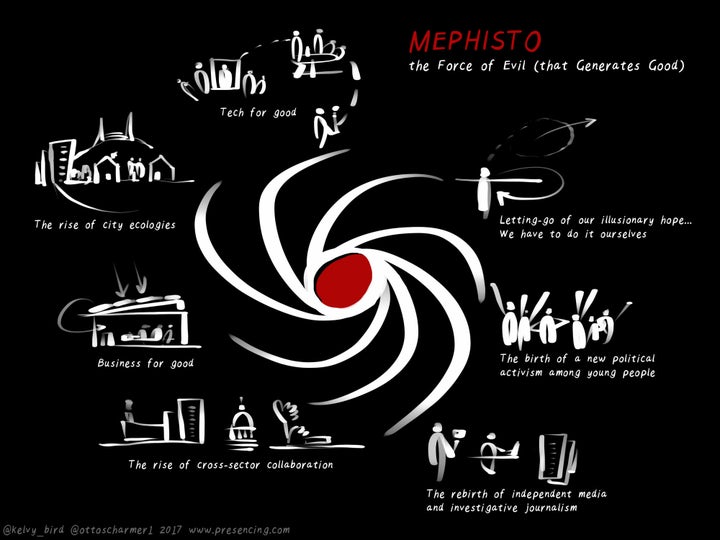
Image 3: The Force that Wills Evil and Generates Good
The Blind Spot
So these are the three images I see: (1) The “iceberg,” that is, the old structure of our social field is somehow turning upside down, going through a full process of inversion. (2) Our old models of responding to new challenges are out of date, as embodied in the US response to security threats: we’re armed to the teeth to combat the enemy outside, but how prepared are we to meet the enemy within? That's a challenge we face not only as individuals, but also collectively as organizations, communities, countries, and global systems. (3) And then the Mephisto principle: the age of Trump has raised a lot of fear, confusion, despair, and hopelessness among us. But these reactions miss what I believe is most important event of our lifetime. If we let the dust settle, we will see the seeds of a new global movement all around us. The seven seedlings of the “gifts” described above, can be found in countless places and variations all over the map. THAT is the new that should have our utmost attention. But what are many of us—including yours truly—doing instead? More often than we would like, we’re getting caught in the upper half of the absencing-presencing spectrum depicted in figure 2.
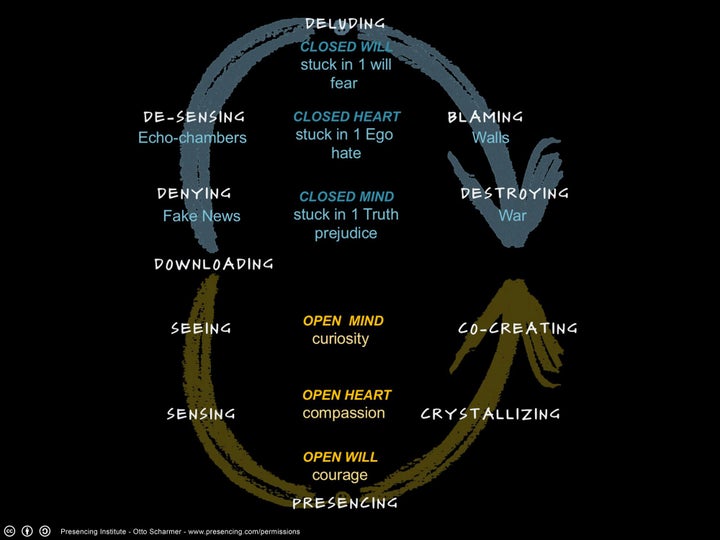
Figure 2: The Spectrum of the Social Field: From Absencing to Presencing
Why is the upper part of this spectrum so well attended to and the lower part of this spectrum—with so many great examples—so widely under-attended to? It’s because the upper part is hugely amplified by the media and social media, while the lower part receives virtually no amplification. This imbalance highlights a significant blind spot in our current institutional infrastructures.
Which brings me to the final point: Dark Money.
Dark Money
In her book Dark Money, Jane Mayer describes how the rise of Trump and the far right is not a historical accident, but the result of a billion-dollar investment by a small group of billionaires in changing the public perception of climate change and creating the movement that put the pro-market and anti-regulation Trump administration into office. Some of them have been long-term investors and funders, like the Koch brothers. Others, like Ronald Mercer, only recently joined that field (by making the Breitbart media platform work for the Trump messaging). For example, did you ever wonder why the United States is the only country on earth that, in addition to moving backward on environmental protection, gives voice to the bizarre debate over whether climate change is real or a hoax perpetrated by the Chinese? No other country—not China, India, or anywhere else—is having this bizarre conversation. Here’s why.
During the presidencies of George H. W. Bush and Bill Clinton, and until the early 2000s, there was a solid bipartisan consensus that climate change was a real threat and that something substantial, like a carbon tax, needed to be implemented.
However, the prospect for curbs on carbon ignited strong opposition from the fossil fuel industry. The Koch brothers and their fellow billionaires took a lead role in launching a campaign that resulted in a full-blown climate denial industry. Over the course of just seven years, from 2003 to 2010, they invested no less than half a billion dollars in this venture. The campaign was funded by 140 conservative foundations that pooled their money and distributed $558 million in the form of 5,299 grants to ninety-one different nonprofit organizations (Dark Money, p. 251). This is just one of many examples that Jane Mayer cites. While it is not new that plutocrats in the United States (and elsewhere) buy political influence or entire elections, what is new is the level of professionalism in the strategic funding: the pooling of resources and investing strategically and long-term in (1) high-impact individuals with influential ideas, (2) well-known think tanks and university programs that can develop policy proposals and demonstrate academic rigor, (3) media and social media infrastructures as well as on-the-ground movement building. In short, the effort has been professional, coordinated, and strategic over the long term.
Compare that strategy to the effort by those of us who are trying to create, sustain, and scale an economy that generates well-being for all? How is that going? As you know, we have a very fragmented field of funders (little pooling of resources), most of which do not fund long-term projects. (All real change happens slowly and requires long-term commitment, but funders’ priorities tend to change much more frequently.) Certainly we are not anywhere close to achieving the strategic coherence that the Koch brothers and their fellow billionaires were able to pull off. We are playing like amateurs.
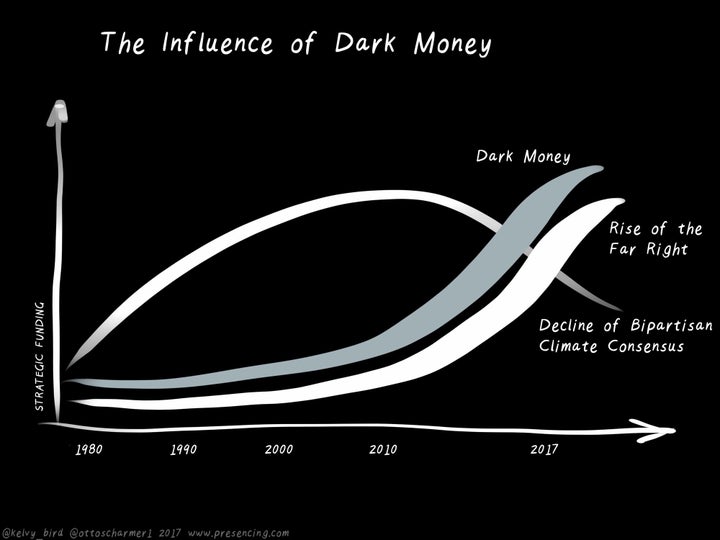
Figure 3: Dark Money, the Rise of the Far Right, and the Decline of Climate Consenus
The Call of Our Time
Never before has there been a generation whose decisions—what we take on or turn away from—will have such a critical long-term impact both on the planet and on the course of human history. Over the next 5 to 10 years, can we rise to the occasion and launch a set of practical and scalable proposals for civilizational renewal that updates the operating codes of our economies, democracies, and learning systems?
· economies: from ego to eco
· democracies: toward more direct, distributed, and dialogic participation, and
· learning systems: from testing-based bulimia learning (quick in, quick out) to sensing and realizing one’s highest future potential.
What is the call of our time? I believe it is to realize that the future is already here. All the seeds, all the living examples, all the partners we need to pull this off are already here. But we need to attend to and connect with them, and nurture the deeper eco-systems of collaboration and co-creation.
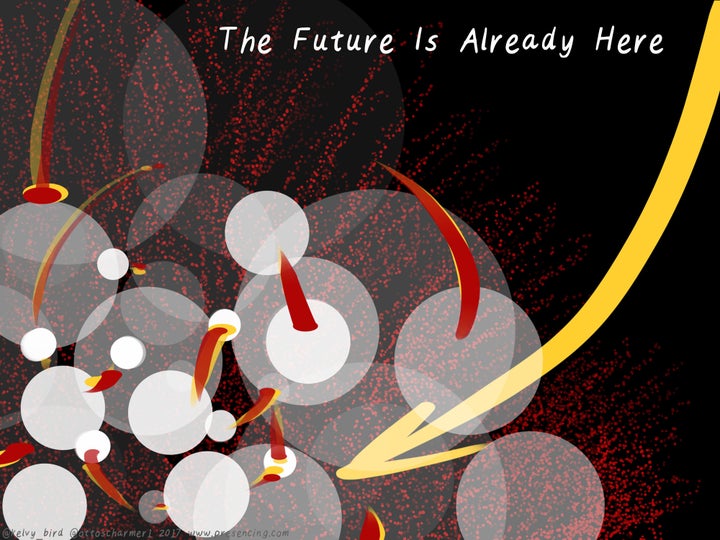
Image 5: The Future Is Already Here
To do this and to amplify the great living examples that are already among us, the u.lab is launching a new platform in April 2017 that will bring together change-makers across systems, sectors, and cultures on a monthly basis. These people and organizations will use new interactive formats, mindfulness practices, hands-on tools, and web-based small-group dialogues to share their inspiring living examples with each other. The first session will be held April 20.
Over the next few months I will outline the larger territory of economic, political, and educational renewal that we are dealing with today globally—starting tomorrow with an overview of the seven acupuncture points for transforming capitalism.
Links:
Sign up for mailing list (live-session on April 20)
Thanks to Kelvy Bird for the wonderful images, to Diana Chapman Walsh and Susan Havermans for their input, and to Adam Yukelson, Katrin Kaufer, and Aggie Kalungu-Banda for their comments.
